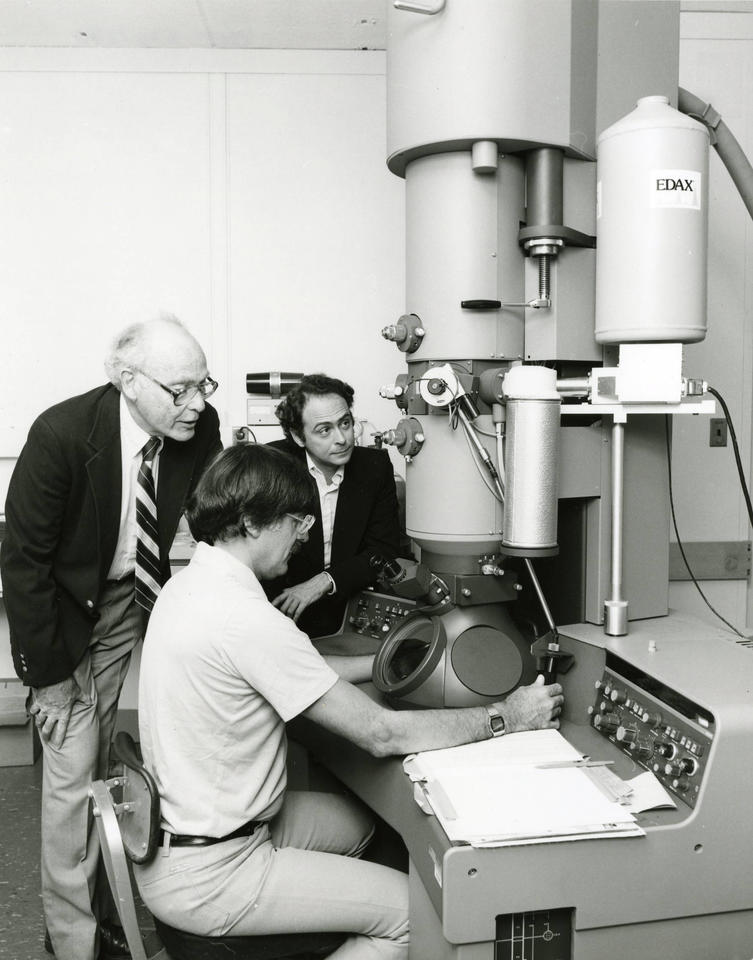Context of a Discovery: Dan Shechtman
All materials consist of atoms, and both the identity and arrangement of those atoms determine a material’s properties. In 1912, German physicist Max von Laue pioneered the technique of sending X-rays through a material and recording where the rays land on a detector screen—now known as X-ray diffraction—to study the arrangement of atoms in solids. So important was von Laue’s advance, which essentially launched modern crystallography, that he received the Nobel Prize in Physics just two years later, much shorter than the usual length of time between a major discovery and Nobel recognition.
Crystallography is the study of crystals, materials in which atoms are arranged in regular geometric patterns. Using X-ray diffraction and other techniques developed later, scientists studied a wide variety of natural and artificial materials. Based on these studies, they determined that all crystals—no matter what they are made of and how they are formed—have a “periodic” atomic structure. Periodic means that the atoms are arranged in a pattern that repeats itself over and over again as you travel in any direction through the material.
This periodicity meant that crystals could have only certain “rotational symmetries.” Specifically, the allowed symmetries are one-, two-, three-, four- and sixfold, meaning that if you rotate a crystal, the crystal will look exactly the same after, respectively, a full rotation, half a rotation, a third of a rotation, a quarter rotation or a sixth of a rotation.
Another way to think about periodicity is that in a periodic crystal, it’s possible to draw a simple shape around a group of atoms and then repeat that shape over and over to completely fill space, similar to how wallpaper and fabric often have simple, endlessly repeating patterns. The process of filling space with a repeating shape is known as tessellation. A crystal with any symmetry other than the traditionally allowed ones cannot be tessellated with only one shape without leaving some gaps in the pattern.
So elegant was the connection between periodicity and geometry, and so consistently and compellingly did the periodicity and symmetry laws seem to describe what scientists found in nature and in the lab, that they were enshrined in every crystallography textbook and in the International Union of Crystallography’s definition of a crystal.
“Crystallographers considered it a closed case,” says NIST materials scientist Leonid Bendersky. Crystallography became about classifying crystals according to a scheme that included exactly 230 ways that atoms could be arranged in three-dimensional space.
When Shechtman arrived at NIST, rapid solidification had become popular as a way to make new crystalline materials. Though hosted by Cahn, Shechtman worked in a group with NIST’s William Boettinger.

Collaborating closely with other lab colleagues, including NIST’s Robert Shull and Frank Biancaniello, the group was producing new alloys through a process called melt spinning, in which researchers dropped a mixture of hot, liquefied metals inside a vacuum enclosure onto the outside edge of a thick rotating metal wheel. The fast-cooling process, which can lower a sample’s temperature by more than 1,000 degrees Celsius per second, sometimes enabled more of one type of metal to dissolve into the other than would have been possible using conventional alloy-creating techniques.
Scientists didn’t know what they would get when they solidified different mixtures of elements. So they created series of alloys with their components in different ratios, and then studied their structures under the microscope. That’s where Shechtman came in. “We were really hurting for anybody to do [TEM] work,” Boettinger recalls.
For a project funded by the Defense Advanced Research Projects Agency, better known as DARPA, Boettinger’s team was studying rapidly solidified silver and copper alloys, which they thought could provide ideas to help companies make new products and improve existing ones such as airplane components. But Shechtman had the freedom to pursue other lines of research as well, and Shechtman decided to have a series of aluminum-manganese alloys made using the melt-spinning technique, even though he knew that some of them were likely to be too brittle to be of much practical use.
“DARPA wanted me to develop useful alloys, and I did,” Shechtman says. “But I also prepared alloys that were not useful, but were interesting.”
One of them would prove interesting enough for a Nobel Prize.
“We had a nice social life with him while he was here; it wasn’t just work. He was a very enjoyable person to be around, very interesting to talk to. He had a generally very pleasant personality, and was very easy to work with. He was a hard worker…He was the kind of person you liked to have as a colleague.”
– William Boettinger, NIST Fellow Emeritus, Materials Science and Engineering Division

